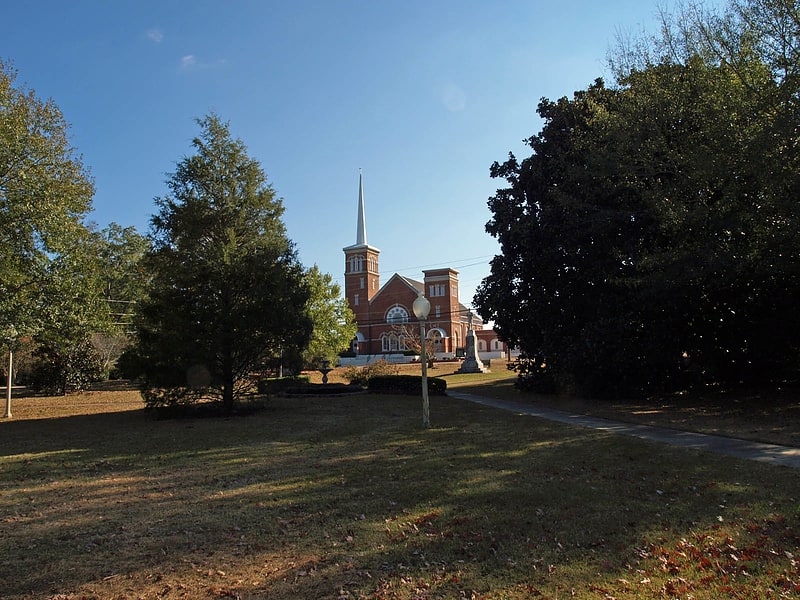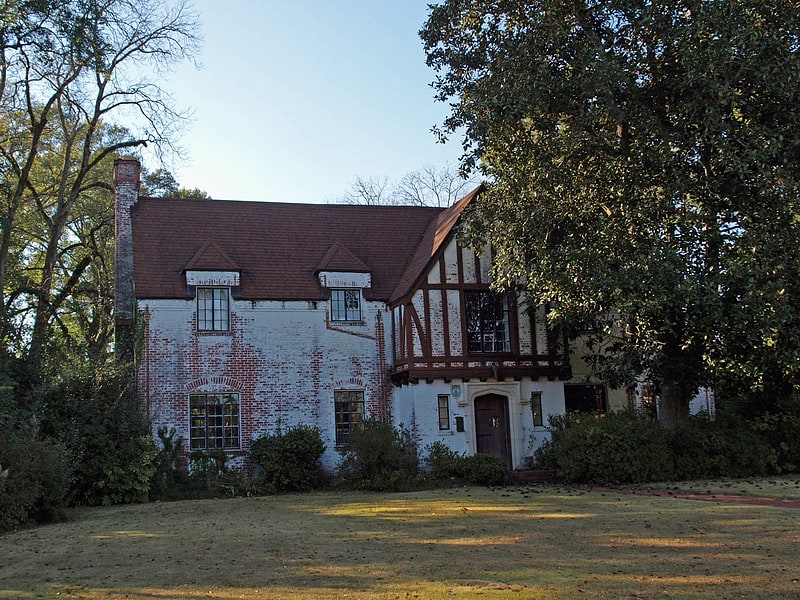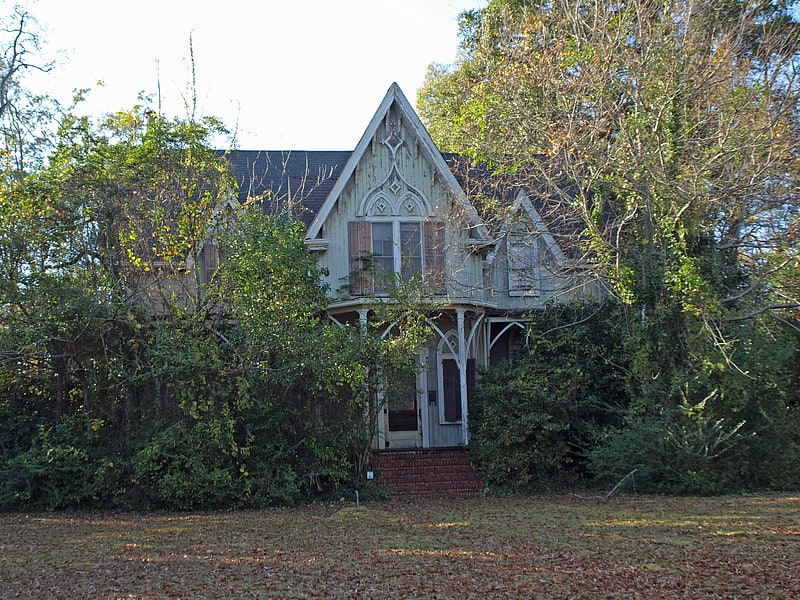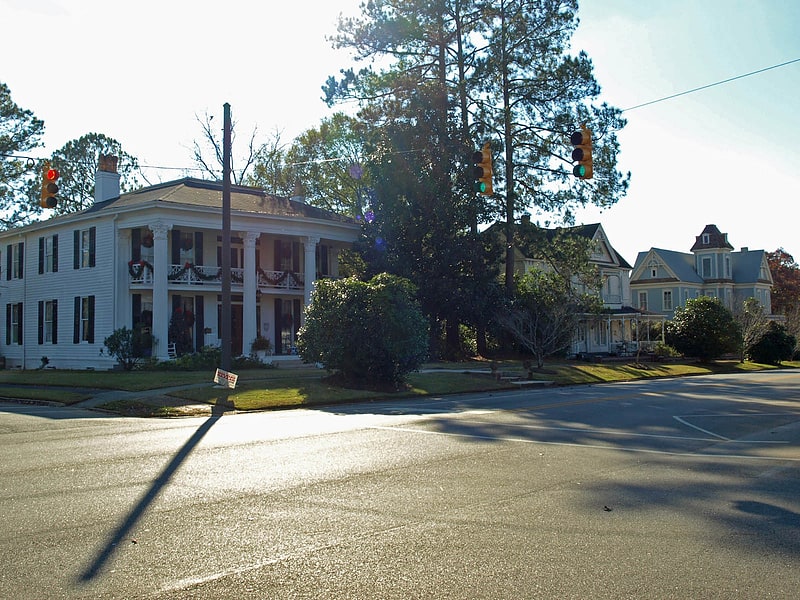Discover 7 hidden attractions, cool sights, and unusual things to do in Greenville (United States). Don't miss out on these must-see attractions: Confederate Park, First Presbyterian Church, and Butler Chapel A.M.E. Zion Church. Also, be sure to include Greenville City Hall in your itinerary.
Below, you can find the list of the most amazing places you should visit in Greenville (Alabama).
Table of Contents
Confederate Park

Park in Greenville, Alabama. Confederate Park is a park in Greenville, Alabama. The park was established in 1902 in front of the First Methodist Church on 1 acre of land donated by the church to the United Daughters of the Confederacy. The following year, the UDC commissioned a 16-foot marble statue of a Confederate soldier on a pedestal. In the following years, many shrubs and shade trees were planted, and in 1909 a fountain was donated by Mayor Claude E. Hamilton, and was placed in the center of the park. Sidewalks along Commerce Street and diagonal walkways through the park, as well as several benches, were also placed. In the 1920s, a landscape architect was hired to place flowers and evergreens. In 1937, the city hall was built across Commerce Street from the park.
The park was listed on the National Register of Historic Places in 1986.[1]
First Presbyterian Church

Church in Greenville, Alabama. First Presbyterian Church is a historic Presbyterian church at 215 East Commerce Street in Greenville, Alabama. It was built in 1886 and added to the National Register of Historic Places in 1986. The church is a member of the Presbyterian Church in America.[2]
Address: 215 E Commerce St, 36037-2211 Greenville
Butler Chapel A.M.E. Zion Church

Butler Chapel A.M.E. Zion Church is a historic African Methodist Episcopal Zion Church in Greenville, Alabama.
It was built in 1913 and added to the National Register in 1986.[3]
Greenville City Hall

City government office in Greenville, Alabama. Greenville City Hall in Greenville, Alabama is a historic city hall. The building was designed by Montgomery architect Moreland Griffith Smith, and built in 1936–37 by workers from the Works Progress Administration. The building is designed in a Colonial Revival style with Palladian influences, a popular style in the 1930s due to the recent restoration of Colonial Williamsburg. It was built on the site of a grammar school that was originally built in the 1890s, but burned in the early 1920s and again in 1927. The building is constructed of brick, with a full-height portico around the main entry. Each window on the first floor is topped with an ashlar keystone. The corners of the main block are adorned with stone quoins. The building was listed on the National Register of Historic Places in 1986.[4]
Address: 119 East Commerce Street, Greenville
W.S. Blackwell House

The W. S. Blackwell House is a historic residence located at 211 Ft. Dale Street in Greenville, Alabama. The house was built around 1930, on land previously occupied by W. S. Blackwell's father-in-law's house, which burned in the 1920s.[5]
Buell–Stallings–Stewart House

The Buell–Stallings–Stewart House is a historic residence in Greenville, Alabama. The house was built in 1874 by local lawyer David Buell, who later sold it to U. S. Congressman Jesse F. Stallings. Stallings sold the house to A. Graham Stewart, a local merchant, in 1901. The house is built in a Carpenter Gothic style, rare in Alabama, and features a steeply sloped roof and several sharply pointed gables and dormers. A flat-roofed, octagonal porch projects over the front entry. Each window and door is topped with a decorative Gothic arch molding with a diamond in the middle. The house was listed on the National Register of Historic Places in 1986.[6]
Commerce Street Residential Historic District

The Commerce Street Residential Historic District is a historic district in Greenville, Alabama. The district consists of four houses along Commerce Street, constructed between 1846 and 1895. They represent the final and last remaining residential construction on the town's main street.
The Steiner-Kendrick House was built in 1846 in Greek Revival style, and features a pyramidal roof with a front-facing gable which features a Palladian window. Its interior was remodeled with Queen Anne details around 1900. The Henry House was built in 1854 in less restrained Greek Revival style. The façade is dominated by four double-height Corinthian columns supporting the recessed portico. A second-story veranda stretches across the front of the house. The Martin House was built in 1895, incorporating an older cottage that had been built in 1853. The Italianate house has a mansard-esque gable roof and a wraparound hip roofed porch. The eaves, gable ends, and porch all feature intricate Stick-Eastlake woodwork. The Perry House, also built in 1895, has Italianate and Victorian influences. It has a central, squared belvedere next to a projecting cross-gable end bay with a semicircular bay window on the ground floor.
The district was listed on the National Register of Historic Places in 1986.[7]